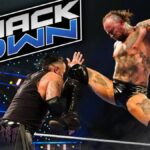In wrestling, imitation is often seen as the highest form of flattery, yet it has frequently resulted in negative outcomes. Wrestling promotions have a history of mimicking each other’s styles and characters, with WWE often being the prime example among leading promotions.
Many wrestling companies have tried to create gimmicks inspired by popular WWE personas, though most attempts fall short. Only a few, like Abyss, have succeeded by blending original ideas with recognizable influences. Conversely, several performers failed spectacularly when copying WWE characters.
Dixie Carter initially rejected the idea of becoming an on-screen authority figure but soon embraced the role, adopting a heel boss persona similar to Stephanie McMahon’s successful act in WWE. Carter’s TNA character mirrored McMahon’s style, trying to emulate WWE’s popularity but ultimately didn’t reach the same acclaim.
WCW, under Eric Bischoff, sought to capitalize on Hulk Hogan and Randy Savage’s star power. They teased another big name but ended up introducing ‘The Renegade,’ a Rick Wilson character who disappointed fans because of his blatant imitation of the Ultimate Warrior in entrance and face paint. This gimmick flopped, and the real Ultimate Warriors joined WCW in 1998.
TNA introduced Shark Boy, a comedic character parodying Steve Austin’s “Stone Cold” persona after a head injury storyline. Despite Shark Boy’s attempts to mirror Austin’s ruthless style, the comedic approach resulted in a watered-down version that fans saw as silly rather than tough.
Vince Russo, during his time with WCW, created the Misfits in Action, a stable with members including Hugh Morrus and Chavo Guerrero, which was a clear riff on WWE’s D-Generation X. However, the stable lacked the edge and success of DX, partly because WCW weakened its heels by involving them in babyface-type antics.
Lance Archer started in TNA with a gimmick reminiscent of WWE’s Diesel, playing a diesel-like enforcer named Dallas. Despite some entertaining matches, the character did not resonate with fans, and Archer only became a real force after dropping the Diesel impersonation.
WCW’s Asya was an unfortunate parody targeting WWE’s Chyna during the intense Monday Night Wars. Intended as a mockery, this gimmick was widely panned for being disrespectful and failed to garner fan support.
TNA tried to replicate Daniel Bryan’s underdog wrestling storyline with Eric Young, who played a similar bearded, fan-favorite losing character. Though Young was popular, the obvious copying from WWE diminished the impact of his push.
Juventud Guerrera, a Cruiserweight in WCW, was turned into a comedic character by Vince Russo, mimicking The Rock in a failed attempt at humor. This gimmick was poorly received and marked a decline from Guerrera’s previous success.
Fan Take: WWE fans should care about these examples because they highlight the challenges and risks of copying popular characters instead of creating original content. This pattern shows how innovation drives wrestling success, and mere imitation can dilute the art form, potentially hindering the sport’s growth and fan engagement.












